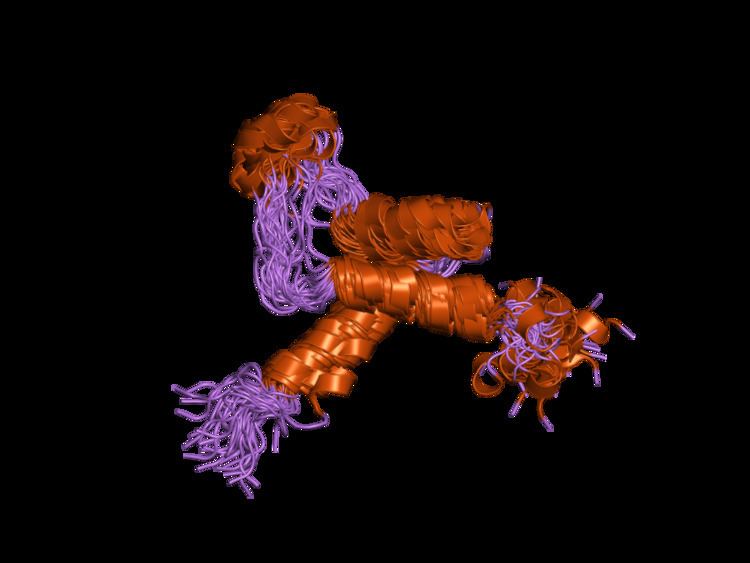Entrez 8463 | Ensembl ENSG00000074219 | |
 | ||
Aliases TEAD2, ETF, TEAD-2, TEF-4, TEF4, TEA domain transcription factor 2 External IDs OMIM: 601729 MGI: 104904 HomoloGene: 19662 GeneCards: TEAD2 | ||
TEAD2 (ETF, ETEF-1, TEF-4), together with TEAD1, defined a novel family of transcription factors, the TEAD family, highly conserved through evolution. TEAD proteins were notably found in Drosophila (Scalloped), C. elegans (egl -44), S. Cerevisiae and A. nidulans. TEAD2 has been less studied than TEAD1 but a few studies revealed its role during development.
Contents
Function
TEAD2 is a member of the mammalian TEAD transcription factor family (initially named the transcriptional enhancer factor (TEF) family), which contain the TEA/ATTS DNA-binding domain. Members of the family in mammals are TEAD1, TEAD2, TEAD3, TEAD4.
Tissue Distribution
TEAD2 is selectively expressed in a subset of embryonic tissues including the cerebellum, testis, and distal portions of the forelimb and hindlimb buds, as well as the tail bud, but it is essentially absent from adult tissues. TEAD2 has also been shown to be expressed very early during development, i.e. from the 2-cell stage.
TEAD orthologs
TEAD proteins are found in many organisms under different names, assuming different functions. For example in Saccharomyces cerevisiae TEC-1 regulates the transposable element TY1 and is involved in pseudohyphale growth (the elongated shape that yeasts take when grown in nutrient-poor conditions). In Aspergillus nidulans, the TEA domain protein ABAA regulates the differentiation of conidiophores. In drosophila the transcription factor Scalloped is involved in the development of the wing disc, survival and cell growth. Finally in Xenopus, it has been demonstrated that the homolog of TEAD regulates muscle differentiation.
Function
Post transcriptional modifications
TEAD1 can be palmitoylated on a conserved cysteine at the C-term of the protein. This post-translational modification is critical for proper folding of TEAD proteins and their stability. Based on bioinformatics evidence TEAD2 can be ubiquitinylated at Lys75 and several phosphorylation sites exist in the protein.
Cofactors
TEAD transcription factors have to associate with cofactors to be able to induce the transcription of target genes. Concerning TEAD2 very few studies have shown specific cofactors. But due the high homology between the TEAD family members its believed that TEAD proteins may share cofactors. Here are presented the cofactor that interact with TEAD2.
Clinical significance
Recent animal models indicating a possible association of TEAD2 with anencephaly.
